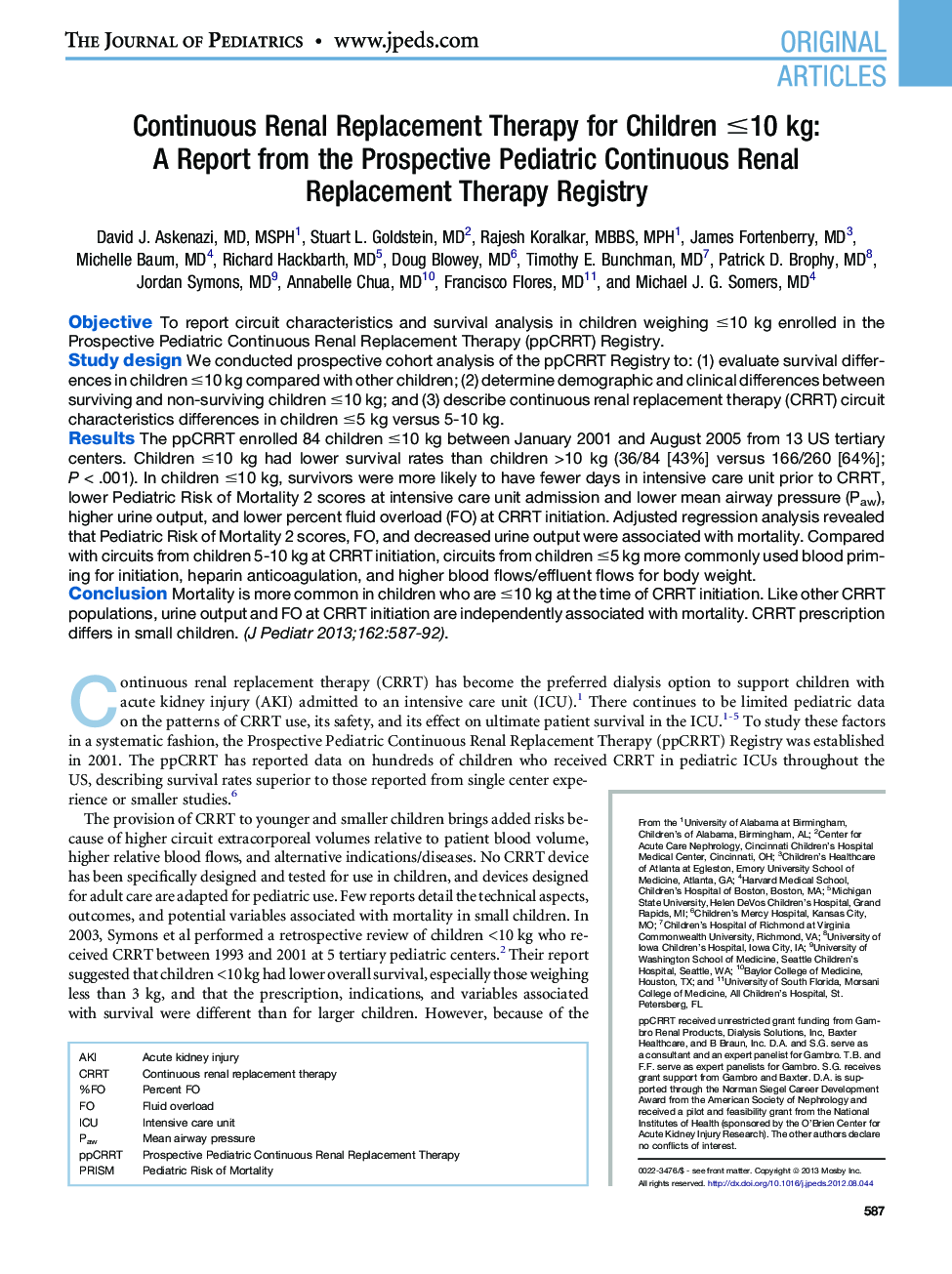| Article ID | Journal | Published Year | Pages | File Type |
|---|---|---|---|---|
| 6224202 | The Journal of Pediatrics | 2013 | 9 Pages |
ObjectiveTo report circuit characteristics and survival analysis in children weighing â¤10 kg enrolled in the Prospective Pediatric Continuous Renal Replacement Therapy (ppCRRT) Registry.Study designWe conducted prospective cohort analysis of the ppCRRT Registry to: (1) evaluate survival differences in children â¤10 kg compared with other children; (2) determine demographic and clinical differences between surviving and non-surviving children â¤10 kg; and (3) describe continuous renal replacement therapy (CRRT) circuit characteristics differences in children â¤5 kg versus 5-10 kg.ResultsThe ppCRRT enrolled 84 children â¤10 kg between January 2001 and August 2005 from 13 US tertiary centers. Children â¤10 kg had lower survival rates than children >10 kg (36/84 [43%] versus 166/260 [64%]; P < .001). In children â¤10 kg, survivors were more likely to have fewer days in intensive care unit prior to CRRT, lower Pediatric Risk of Mortality 2 scores at intensive care unit admission and lower mean airway pressure (Paw), higher urine output, and lower percent fluid overload (FO) at CRRT initiation. Adjusted regression analysis revealed that Pediatric Risk of Mortality 2 scores, FO, and decreased urine output were associated with mortality. Compared with circuits from children 5-10 kg at CRRT initiation, circuits from children â¤5 kg more commonly used blood priming for initiation, heparin anticoagulation, and higher blood flows/effluent flows for body weight.ConclusionMortality is more common in children who are â¤10 kg at the time of CRRT initiation. Like other CRRT populations, urine output and FO at CRRT initiation are independently associated with mortality. CRRT prescription differs in small children.
